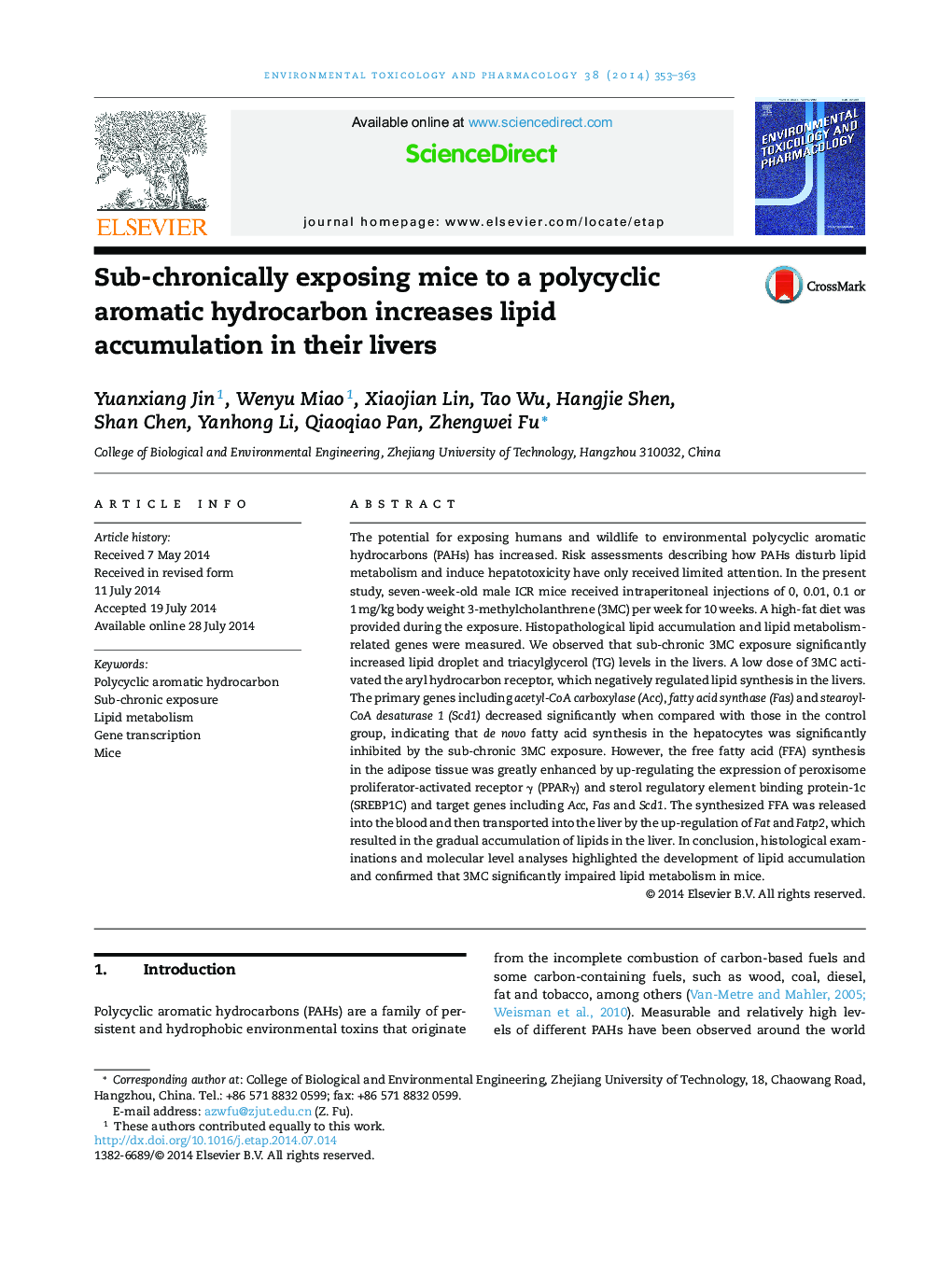| کد مقاله | کد نشریه | سال انتشار | مقاله انگلیسی | نسخه تمام متن |
|---|---|---|---|---|
| 2583593 | 1130696 | 2014 | 11 صفحه PDF | دانلود رایگان |
• Effects of chronic PAH exposure on fat metabolism in mice were evaluated.
• 3MC affected the expression of PPARα, PPARγ, SREBP1C and their target genes.
• Chronic exposure of 3MC enhanced of FFA synthesis in the adipose tissue.
• The transport of FFA from blood into hepatocytes increased significantly after chronic 3MC exposure.
• Chronic 3MC exposure increased lipid droplets and triacylglycerol levels in the liver.
The potential for exposing humans and wildlife to environmental polycyclic aromatic hydrocarbons (PAHs) has increased. Risk assessments describing how PAHs disturb lipid metabolism and induce hepatotoxicity have only received limited attention. In the present study, seven-week-old male ICR mice received intraperitoneal injections of 0, 0.01, 0.1 or 1 mg/kg body weight 3-methylcholanthrene (3MC) per week for 10 weeks. A high-fat diet was provided during the exposure. Histopathological lipid accumulation and lipid metabolism-related genes were measured. We observed that sub-chronic 3MC exposure significantly increased lipid droplet and triacylglycerol (TG) levels in the livers. A low dose of 3MC activated the aryl hydrocarbon receptor, which negatively regulated lipid synthesis in the livers. The primary genes including acetyl-CoA carboxylase (Acc), fatty acid synthase (Fas) and stearoyl-CoA desaturase 1 (Scd1) decreased significantly when compared with those in the control group, indicating that de novo fatty acid synthesis in the hepatocytes was significantly inhibited by the sub-chronic 3MC exposure. However, the free fatty acid (FFA) synthesis in the adipose tissue was greatly enhanced by up-regulating the expression of peroxisome proliferator-activated receptor γ (PPARγ) and sterol regulatory element binding protein-1c (SREBP1C) and target genes including Acc, Fas and Scd1. The synthesized FFA was released into the blood and then transported into the liver by the up-regulation of Fat and Fatp2, which resulted in the gradual accumulation of lipids in the liver. In conclusion, histological examinations and molecular level analyses highlighted the development of lipid accumulation and confirmed that 3MC significantly impaired lipid metabolism in mice.
Journal: Environmental Toxicology and Pharmacology - Volume 38, Issue 2, September 2014, Pages 353–363
